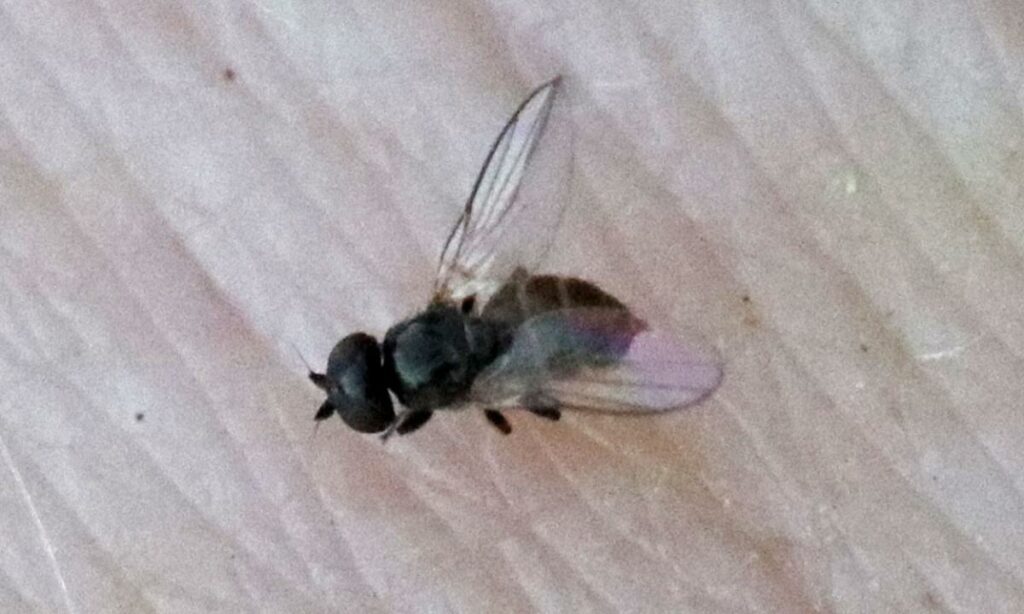While being outside this week, I noticed a lot of small gnats flying around my legs and really bothering my dogs. I caught a few and identified them as eye gnats. Normally, eye gnats aren’t an issue in South Dakota and are more commonly an issue in the southwestern United States. However, eye gnats are widespread and when conditions are right, they will show up in large populations. The two groups of eye gnats that have been observed in South Dakota vary a little in appearance. All of the flies are small from 1/16th of an inch to 1/8th of an inch long. They have clear wings and shiny black bodies (Figure 1).
Eye gnats get their name because they are attracted to the eyes, nose and mouth of humans, pets and livestock. The adult females feed on animal sweat, sebaceous secretions and other bodily secretions that are associated with wounds. Eye gnats will not bite and do not cause wounds. However, they will take advantage of existing wounds. Although this pest is considered a nuisance in most cases, it is capable of transmitting diseases and pathogens. One of illnesses associated with eye gnat activity is the spread of the bacteria that cause human conjunctivitis or pink eye. In livestock, it is known to spread bacteria that cause conjunctivitis as well as mastitis.
The large eye gnat populations are probably due to wet conditions this spring and the amount of plant material that was incorporated into soil due to 2019 prevent plant conditions. However, now that the eye gnats are present, they are able to use manure piles, grass clippings, or any moist area with recent disturbances. The best approach to avoiding eye gnats is to wear clothing barriers, cover wounds and remove potential breeding sites if possible. Insect repellants can be effective for humans and there are insecticides labeled for livestock that may provide some relief for the animals.
SOURCE: Adam Varenhorst – Associate Professor & SDSU Extension Field Crop Entomologist
Additional Authors: Amanda Bachmann, Philip Rozeboom, Patrick Wagner
PHOTO: Eye gnat adult. Adam Varenhorst.








